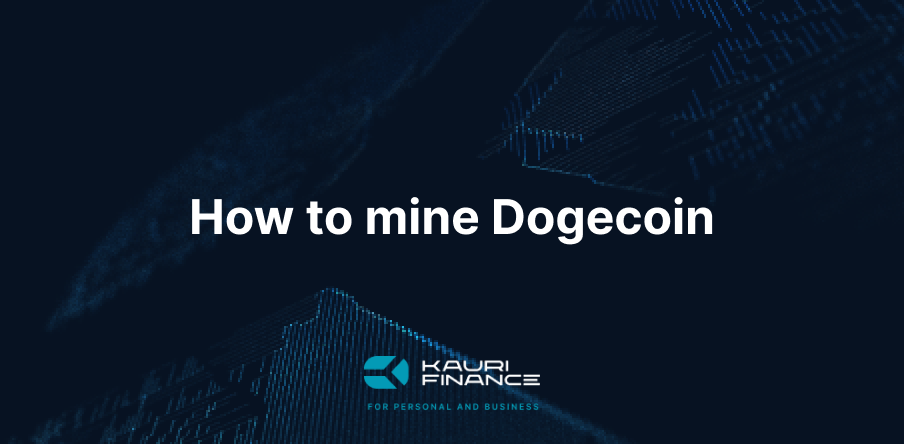
How to Mine Dogecoin: A Comprehensive Guide
- Understanding Dogecoin Mining
- Choosing the Right Mining Hardware
- Setting Up Your Mining Software
- Joining a Mining Pool vs. Solo Mining
- Optimizing Your Mining Operation
- Understanding Mining Economics
- Legal and Regulatory Considerations
- Future of Dogecoin Mining
- Frequently Asked Questions About Dogecoin Mining
- What is the minimum investment required to start mining Dogecoin?
- How long does it take to mine one Dogecoin?
- Is Dogecoin mining still profitable in 2024?
- Can I mine Dogecoin on my personal computer?
- What are the risks associated with Dogecoin mining?
- How does Dogecoin mining affect my electricity bill?

Understanding Dogecoin Mining
Dogecoin mining transforms computational power into digital gold, offering a unique landscape rooted in proof-of-work. Miners tackle complex puzzles, validating transactions and securing the network for rewards.
-
Block Rewards: 10,000 DOGE per block, outshining Bitcoin's diminishing returns
-
Scrypt Algorithm: Memory-intensive hashing favors GPU miners, distinct from Bitcoin's SHA-256
-
Merged Mining: Simultaneous mining with Litecoin maximizes efficiency
-
Dynamic Difficulty: Adjusts complexity for consistent block times, balancing accessibility and security
-
Energy Efficiency: Consumes 0.12 kWh per transaction, compared to Bitcoin's 707 kWh
Understanding these nuances is crucial for aspiring miners. The interplay of these factors shapes the ecosystem, influencing profitability and strategy in this meme-inspired realm.
Now that we've grasped the basics of Dogecoin mining, let's explore the hardware options that can maximize your mining efficiency and profitability.
Choosing the Right Mining Hardware
Selecting the optimal hardware for Dogecoin mining is pivotal in maximizing profitability and efficiency. While ASICs dominate Bitcoin mining, Dogecoin's Scrypt algorithm allows for diverse mining options. GPUs remain competitive, offering a cost-effective balance that appeals to many miners.
Let's compare popular mining rigs to inform your decision:
|
Hardware |
Model |
Hash Rate (MH/s) |
Power (W) |
Daily Profit (USD)* |
ROI (Days)** |
|
ASIC |
Bitmain Antminer L7 |
9500 |
3425 |
5.20 |
385 |
|
ASIC |
Goldshell LT6 |
3600 |
2800 |
1.85 |
541 |
|
GPU |
NVIDIA RTX 3090 |
120 |
350 |
0.15 |
1000 |
|
GPU |
AMD RX 6800 XT |
65 |
300 |
0.08 |
1250 |
*Profits vary with market conditions and electricity costs.
**ROI based on current market prices and average electricity costs.
ASICs offer superior hash rates but come with higher upfront costs and limited flexibility. GPUs, while less powerful, provide versatility and can be repurposed if mining becomes unprofitable.
With the right hardware in place, the next crucial step is setting up the software that will power your Dogecoin mining operation. Let's dive into the process of configuring your mining software for optimal performance.
Setting Up Your Mining Software
Configuring your Dogecoin mining software is crucial for maximizing your digital digging potential. Here's a streamlined guide to get you started:
-
Select software: MultiMiner for novices, CGMiner for experts
-
Download from official sources to avoid security risks
-
Install with antivirus paused to prevent false flags
-
Input mining pool or solo mining details
-
Set up your Dogecoin wallet for rewards
-
Optimize thread concurrency, intensity, and worksize
-
Enable temperature monitoring for hardware safety
-
Implement failover pools for continuous mining
-
Schedule regular updates for peak performance
-
Run a test session before full-scale deployment
Fine-tune settings regularly to maximize your DOGE yield. Remember, optimization is an ongoing process in the ever-evolving world of cryptocurrency mining.
Now that your hardware and software are ready, it's time to decide whether to join forces with other miners or go solo. Let's weigh the pros and cons of pool mining versus solo mining to help you make the best choice for your Dogecoin mining journey.
Joining a Mining Pool vs. Solo Mining
In the Dogecoin mining landscape, choosing between pool and solo mining can shape your success. Pool mining offers consistent, smaller payouts by combining computational power, mitigating the volatility of solo mining. Conversely, solo miners face higher variance but retain full block rewards when successful, appealing to those with substantial hash power and risk tolerance.
Solo mining Dogecoin is akin to panning for gold in a vast river. You might strike it rich, but pooled resources offer a steadier stream of digital nuggets. In 2023, solo miners averaged 3,500 DOGE per successful block, while pool miners earned 15-20 DOGE daily.
Your decision should align with your risk appetite, resources, and goals. Pool mining suits stability seekers, while solo mining attracts risk-takers eyeing larger payouts. Success in Dogecoin mining demands dedication, adaptability, and the spirit of the iconic Shiba Inu.
With your mining operation set up, it's time to fine-tune your strategy for maximum efficiency and profitability. Let's explore some advanced techniques to optimize your Dogecoin mining efforts.
Optimizing Your Mining Operation
Optimizing your Dogecoin mining operation is crucial for maximizing profitability in the dynamic crypto landscape. Savvy miners continuously fine-tune their setups to stay competitive. Here are some cutting-edge strategies to supercharge your mining efficiency:
-
Implement liquid cooling solutions for GPUs, potentially boosting hash rates by 15%
-
Utilize smart power strips to leverage off-peak electricity rates
-
Experiment with BIOS modding, carefully adjusting GPU memory timings
-
Deploy machine learning algorithms to adapt to network difficulty changes
-
Leverage geothermal energy in cold climates for reduced cooling costs
-
Implement parallel processing techniques for multi-GPU rigs
-
Apply undervoltage techniques to reduce power consumption
Remember, sustained success hinges on continuous optimization and market adaptation.
Understanding the economics of mining is crucial for long-term success. Let's delve into the financial aspects of Dogecoin mining to ensure you're making informed decisions about your investment.
Understanding Mining Economics
Unraveling the economics of Dogecoin mining reveals a complex interplay of factors that can make or break your venture. Profitability hinges on the delicate balance between operational costs and potential rewards. Let's dissect the key economic components:
|
Factor |
Impact |
Optimization Strategy |
|
Electricity Costs |
High |
Utilize renewable energy, exploit off-peak rates |
|
Hardware Depreciation |
Medium |
Invest in efficient, future-proof equipment |
|
Network Difficulty |
Variable |
Dynamically adjust hash power, leverage AI predictions |
|
DOGE Price Volatility |
High |
Implement strategic holding periods, use automated trading |
Consider this scenario: a mid-range GPU rig consuming 1000W mines approximately 30 DOGE daily. At $0.10/kWh, your daily electricity cost is $2.40. With DOGE at $0.08, you'd break even at $2.40. Factor in hardware depreciation, and profitability becomes elusive. The key? Relentless optimization. Explore innovative cooling solutions, leverage tax incentives, and stay agile amidst market fluctuations. In the Dogecoin mining arena, adaptability is your most valuable asset.
As we navigate the complexities of Dogecoin mining, it's crucial to understand the legal landscape. Let's explore the regulatory considerations that could impact your mining operations.
Legal and Regulatory Considerations
Navigating the legal landscape of Dogecoin mining in the U.S. demands vigilance. Miners face a patchwork of state-specific regulations affecting energy use and taxation. The IRS treats mined crypto as income, triggering self-employment and potential capital gains taxes. Environmental concerns have led some jurisdictions to impose restrictions or higher utility rates on energy-intensive operations. Compliance with AML and KYC regulations is crucial when converting DOGE to fiat. Miners must also navigate intellectual property considerations, as some software carries licensing restrictions. Staying informed is key in this rapidly evolving regulatory environment, where adaptability can mean the difference between compliance and legal complications.
As we look ahead, the future of Dogecoin mining is filled with potential changes and opportunities. Let's address some of the most common questions about Dogecoin mining to round out our comprehensive guide.
Future of Dogecoin Mining
Dogecoin mining's future hinges on protocol upgrades, market shifts, and eco-friendly innovations. Potential proof-of-stake transition and smart contracts could reshape the landscape. Miners must adapt to regulatory changes and leverage emerging technologies to remain competitive in this dynamic field.
Frequently Asked Questions About Dogecoin Mining
What is the minimum investment required to start mining Dogecoin?
Entering Dogecoin mining requires a minimum $500 investment for a basic GPU setup. This covers a mid-range graphics card, power supply, and essentials. For competitive mining, budget $2,000-$3,000 for an ASIC miner, offering superior hash rates and efficiency in the dynamic crypto landscape.
How long does it take to mine one Dogecoin?
Mining Dogecoin isn't linear. A mid-range GPU might yield 30 DOGE daily, averaging 48 minutes per coin. Factors like hardware efficiency and network difficulty impact results. Pool mining offers consistent smaller payouts, while solo mining brings sporadic larger rewards. Profitability fluctuates with market conditions.
Is Dogecoin mining still profitable in 2024?
Dogecoin mining profitability in 2024 remains complex. Network challenges and energy costs pose hurdles, yet technological advances offer hope. Savvy miners using efficient hardware and renewable energy can find profit niches. Success demands constant adaptation in this evolving landscape.
Can I mine Dogecoin on my personal computer?
Mining Dogecoin on personal computers is challenging but possible. GPUs can mine DOGE, though profitability is limited due to ASIC competition. CPU mining is obsolete. Consider cloud mining or joining pools for better results. Carefully evaluate electricity costs and hardware wear before starting.
What are the risks associated with Dogecoin mining?
Dogecoin mining carries significant risks, including market volatility, hardware obsolescence, and regulatory uncertainties. Fluctuating electricity costs and network difficulty can impact profitability. Cybersecurity threats and environmental concerns pose additional challenges. Miners must navigate these complex factors to sustain operations effectively.
How does Dogecoin mining affect my electricity bill?
Dogecoin mining can dramatically increase electricity costs. A mid-range GPU setup consuming 1000W hourly adds about $86 monthly at $0.12/kWh. While efficient ASICs may reduce this, energy usage remains substantial. Consider renewable alternatives to offset expenses and maintain profitability in this energy-intensive venture.
